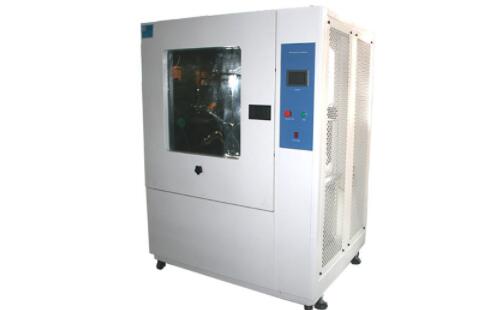Dust proof test - Reliability Test
Date:2021-11-03 17:26:00 Views:2723
Dust proof test is used to detect the test of electrical and electronic products, automobile and motorcycle parts and seals to prevent sand dust from entering the seals and shell in the sand dust environment, and to determine the impact of suspended sand dust in the air on the products. To test the performance of electronic and electrical products, automobile and motorcycle parts and seals in the use, storage and transportation of sand and dust environment.
The test is divided into free falling dust and blowing sand dust
Free dust fall: mainly used to simulate the impact of sand and dust in protected places. The sample is exposed to low-density dusty atmosphere, in which a small amount of dust is injected intermittently and will fall on the sample due to gravity.
Dust blowing: it is mainly used to simulate the sealing performance and corrosion impact of dust on samples under outdoor and vehicle environmental conditions. The sample is exposed to a surge or laminar flow with a certain amount of dust, sand or sand dust mixture.
The dust-proof grade is represented by ipxx, and one X represents the dust-proof grade, from 0 to 6.

In the world, the dust protection level of electronic products is divided into 7 levels from 0 to 6. The specific classification standards are as follows:
1. Level 0 protection indicates that relevant protective measures have not been taken;
2. Level 1 protection means that it can prevent solid foreign objects with a diameter greater than 50mm from invading and prevent human body (such as palm) from accidentally contacting parts inside electrical appliances;
3. Level 2 protection means that it can prevent the invasion of solid foreign objects with a diameter greater than 12.5mm and prevent human fingers from contacting the parts inside the electrical appliance;
4. Level 3 protection means that it can prevent solid foreign objects with a diameter greater than 2.5mm from invading, and tools, wires and similar small foreign objects with a diameter or thickness greater than 2.5mm from contacting the parts inside the electrical appliance;
5. Level 4 protection means that it can prevent solid foreign objects with a diameter greater than 1.0mm from invading, and tools, wires and similar small foreign objects with a diameter or thickness greater than 1.0mm from contacting the parts inside the electrical appliance;
6. Level 5 protection means that it can prevent the invasion of foreign objects and dust, and can completely prevent the invasion of foreign objects. Although it can not completely prevent the invasion of dust, the amount of dust invasion will not affect the normal operation of electrical appliances;
7. Level 6 protection means that it can completely prevent the invasion of foreign objects and dust.
Dust proof test method
1. Non abrasive fine dust. This test is mainly used to test the sealing performance of samples. The test sample is exposed to talc powder or other equivalent very fine dust. It can reproduce the influence caused by different air pressure inside and outside the sample due to temperature alternation.
2. Free falling dust. This method is used to simulate the influence of sand dust in protected places. The sample is exposed to low-density dusty atmosphere, in which a small amount of dust is injected intermittently and will fall on the sample due to gravity.
3. Blowing dust. This method is mainly used to simulate the effects of sand and dust on the sealing performance and abrasion of samples under outdoor and vehicle environmental conditions. The sample is exposed to turbulent or laminar airflow with a certain amount of dust, sand or sand dust mixture.
4. The test dust is dry non abrasive fine dust, which can pass through the plane mesh screen with screen hole of 75 µ m and wire diameter of 50 µ M. The test dust shall not be used more than 20 times. Attention shall be paid to maintaining dryness to maintain dust fineness. It shall be dried at 80 ℃ for 2h before use.
5. The test chamber shall expose the sample to a vertical non laminar flow containing a specified amount of dust. For this purpose, the test dust shall be stirred and blown into the sealed test chamber. The sample volume shall not exceed 25% of the volume of the test chamber, and the sample base shall not exceed 50% of the horizontal area of the working space of the test chamber.
Dust proof test reference standard
Test items, test conditions and test requirements for electrical and electronic components of vehicles under vw80000 3.5t 8.3 anti dust test
GMW general specification for electrical and electronic components - environment / durability 9.5.1 dust prevention
GB / T enclosure protection class (IP code)
GB/T2423. 37-2006 environmental test for electric and electronic products Part 2: Test methods Test L: dust test




 Weixin Service
Weixin Service

 DouYin
DouYin
 KuaiShou
KuaiShou





















